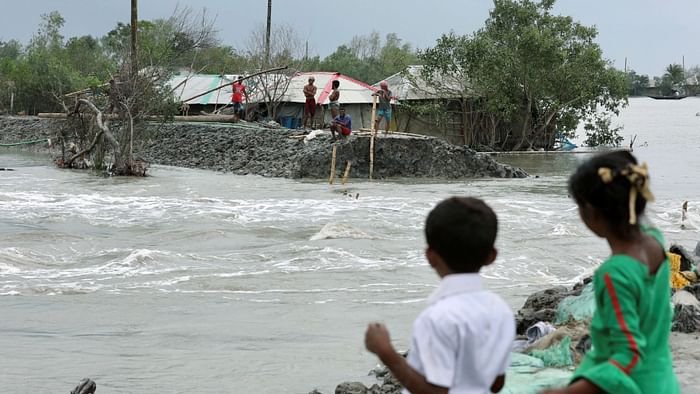Iftekhar Mahmud, Dhaka: Although damage from climate change is intensifying in Bangladesh, the country is unable to adapt to such damage.
The world will face more damage during this century once global warming rises by 1.5 to 2 degree Celsius.
Growing disasters including natural calamities are waiting for Bangladesh in the coming days. So, UN climate and other funds will have to increase for countries like Bangladesh.
The Intergovernmental Panel on Climate Change (IPCC), the UN body for assessing the science related to climate change, made these recommendations in its latest report.
The IPCC Working Group II report “Climate Change 2022: Impacts, Adaptation and Vulnerability” was released on Monday.
The report said some 900,000 to 2.1 million people might be displaced from their homes in southern coastal area of Bangladesh in mid-21st century.
One third of the country’s power plant will have to be relocated to protect those from the impact of rising sea level. Currently, 10 per cent of the population face crisis of drinking water and this may increase to 25 per cent by 2050 due to climate change.
International Union for Conservation of Nature (IUCN), Bangladesh chapter chairperson professor Rashed Al Mahmud Titumir said, “This report of the scientists clearly showed us that poor communities living in the marginal area like Koyra of Bangladesh are the most vulnerable to climate change. But, the issue of damage to these communities did not get importance at the Glasgow climate change conference last year.”
Climate change will hinder global supply chain, market system, financial sector and commercial sector. Availability of products will decrease and price will increase in Bangladesh. Bangladesh may witness a fall in apparel export too. Overall, an economic uncertainty may appear due to fall in agriculture production, damage in important structures and rise in prices of products.
The report mentioned cyclone Amphan that hit coastal areas in West Bengal and Bangladesh in 2020. It was one of the fiercest cyclones to hit West Bengal, India, in the last 100 years. The cyclone intensified from a cyclonic storm to a super cyclone in less than 36 hours. Cyclone Amphan left 100 dead and 2.4 million (24 lakh) displaced. The estimated damage was $13.5 billion in Bangladesh and India.
After cyclone Aila and Sidr hit the coastal area, a large number of the affected people have been collecting woods from the Sundarbans to repair and rebuild their homes. This is creating a pressure on forest resources and damaging biodiversity of the Sundarbans. On the other hand, Bangladesh lacks necessary institutional and financial capacity to build sustainable embankment and cyclone resilient houses for the dwellers in those areas.
The report also highlighted the state of danger posed to St. Martin’s Island. It said the lone coral island of Bangladesh contributes $33.6 millin (3.36 crore) to the country’s economy annually. This contribution, mainly from tourism, may face threat. Existence of the island is going to be in danger because of climate change and other human activities.
Former IPCC member and Palli Karma-Sahayak Foundation (PKSF) chairman Qazi Kholiquzzaman Ahmad told Prothom Alo Bangladesh has been trying to adapt to climate change with its own capacity. This is not enough; Bangladesh has to take climate policy and plan keeping in mind that the situation is becoming worse, he added.
*This report appeared in the print and online edition of Prothom Alo and has been rewritten in English by Hasanul Banna

